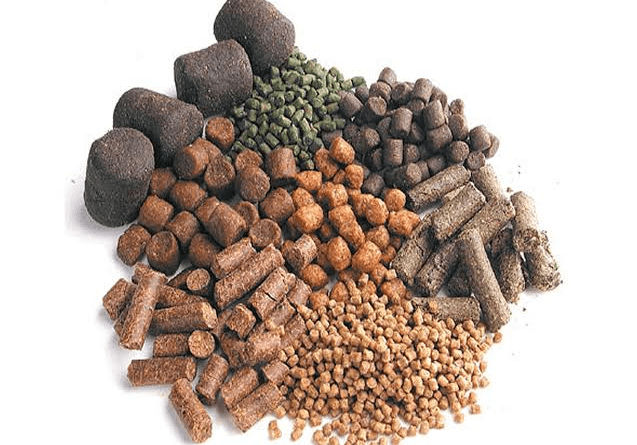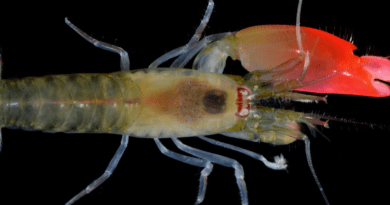Why You Should Not Give Smaller or Bigger Size of Feeds to Catfish
The effect is that if the size of the catfish feed is smaller for the catfish size, it will cause feed wastage as the fishes will consume more than they would have consumed if given the right size of feed as smaller size of feed will not give them satisfaction on time.
However, serving the fishes with bigger size of feed can choke them up in the throat and may lead to their death. There will be low consumption of feeds as swallowing will be affected. Therefore it is better to always serve fish with the appropriate size of feed in order to achieve a better performance and result.
Meanwhile, it is essential to provide a complete diet because catfish can synthesize only a small portion of the required nutrients and the quantity of nutrients from natural food organisms in the pond is relatively small. Forty nutrients have been identified as necessary for the normal metabolic function of channel catfish.
Based on current knowledge, a digestible energy to crude protein (DE/P) ratio of 8.5-10 kcal/gram is adequate for use in commercial catfish feeds. Ratios above this range may lead to increased fat deposition and if the energy ratio is too low, the fish will grow slowly.
Catfish feeds contain grain or grain by-products that are rich in starch. In addition to providing an inexpensive energy source, starch helps bind feed ingredients together and increases expansion of extruded feeds so that the feed pellets are water stable and float in the water. A typical catfish feed contains 25 percent or more of digestible carbohydrates.
Lipid levels in commercial catfish feeds rarely exceed 5-6 percent. About 3-4 percent of the lipid is inherent in the feed ingredients, with the remaining 1-2 percent being sprayed onto the finished pellets to reduce feed “fines”. Both vegetable and animal lipids have been used for pellet coating.
Considerable work has been conducted over the last 10 years concerning the level of dietary protein and amino acids needed for cost effective growth. Data from these studies indicate that the dietary protein requirement for various life stages of catfish ranges from about 25-50 percent. Recent studies have indicated that a protein level of 28 percent is adequate for growout when fish are fed to satiation.
Catfish feed are generally supplemented with a vitamin premix to meet dietary requirements and to compensate for losses due to feed manufacture and storage. Catfish feeds are also supplemented with phosphorus and a trace mineral premix. However, there is evidence that supplemental trace minerals may not be need in diets using animal proteins.
Read Also: Reasons why Catfish becomes Restless inside the pond: Signs, Causes and Control
Catfish Feeds

There are various types of catfish feeds. The type being used at any particular time is a function of size of fish being fed, whether the fish are feeding at the surface or in the water column, and if an antibiotic is incorporated.
Catfish fry in hatcheries are fed finely ground meal- or flour-type feeds containing 45-50 percent protein. Fines or crumbles from 28 or 32 percent protein feeds for food fish growout are suitable for fry stocked in nursery ponds until they reach 1-2 inches in length.
Larger fingerlings should be fed small floating pellets (1/8 inch diameter) containing 35 percent protein. Advanced fingerlings (5-6 inches) and food fish are generally fed a floating feed of approximately 5/32 – 3/16 inch in diameter containing 28-32 percent protein. Some producers switch to a slow-sinking feed during the winter.
Antibiotics are administered to catfish through incorporation in feeds. Depending on the particular antibiotic chosen, the feed may either be floating or sinking.
Catfish Feeding
Despite considerable research, feeding catfish is far from an exact science. It is a highly subjective process that differs among catfish farmers. The variation in feeding practices is a product of numerous factors such as cropping system, fish size, ability to manage water quality, experience of feeding labor, and difficulty in estimating fish inventory.
In general, fish should be fed once a day as much feed as they will consume without adversely affecting water quality. However, depending on water quality variables and the health of the fish, it may be advisable to restrict the daily feed allowance or to feed less often. Long-term feed allowance should not exceed 100-125 pounds per acre per day.
Most catfish producers feed once a day, 7 days a week during the warmer months. Although feeding twice a day may slightly improve growth of fingerlings, the logistics of multiple feedings on large catfish farms make it impractical.
Feed is typically blown onto the surface of the water using mechanical feeders. Feeds should be scattered over as wide an area as possible to provide equal feeding opportunities for as many fish as possible.
Feeding with prevailing winds allows the feed to float across the pond and minimizes the amount of feed washing ashore. Overfeeding should be avoided since wasted feed increases production costs.
Read Also: Methods of Livestock Breeding in the Tropical Environment
Feeding Strategy for Catfish Production

Catfish feed management strategies can be developed which can optimize the weight gain of catfish or minimize cost per unit of catfish weight. Each catfish producer can determine which goal is most important when offering feed to pond raised catfish.
However, most producers chose the goal of minimizing cost per unit of catfish weight gain. Achieving this goal is more difficult than buying the least costly feed. Careful consideration of feed cost versus quality must be combined with good feeding practices in order to get the most from a dollar spent for feed.
Producers should consider that the catfish require different feeds at each stage of growth. It is best to feed a 38% protein feed in a crumble form to the smallest fingerlings. Catfish that are about 3 inches long can utilize a 3/16 inch floating pellet of 35-36% protein content.
Once catfish fingerlings are stocked into food-fish production ponds, the options for feed quality are more numerous. One of the recent options is whether to feed a lower protein feed of about 28% protein or the more customary 32% protein feed. Research with pond raised catfish reports that until the protein content is reduced to 24% the catfish production is comparable to when 32% protein feed is used.
Feeding times effect the weight gain of catfish but weight gain is usually not as important as labor and logistics on large catfish farms. For example, it has been reported that feed offered at two times each day will produce more weight gain than a single daily feeding. However, it has also been reported that offering feed when pond water dissolved oxygen concentrations are low is not advisable.
So, feeding twice a day or morning and evening is difficult most of the year when dissolved oxygen levels are low in the morning. Aeration can be applied to boost the dissolved oxygen but at the added expense of the cost of electricity to run the aerator. For most producers, catfish in the fingerling stages are fed twice daily but catfish in food fish stages are only fed once daily.
Disturbance can have significant effect on feeding behavior and result in weight gain losses. Some sources of disturbance include excessive aeration, significant changes in the pond water level, seining, activity of fish eating birds, sudden drop in dissolved oxygen, sudden decrease or increase in water temperature, changing feed type, and changing feeding time.
This list is a long one because feeding catfish is a complex task. Satiation feeding is the traditional method of providing feed because it assumes that the catfish are regulating their intake in response to any disturbance that might have occurred. Utilizing feeding schedules or computer generated feed allotments is a noble endeavor, but must be combined with daily observations and judgment at the pond bank based on catfish feeding behavior.
Restricted feeding methods can be utilized that maximize feed utilization by catfish. However, the type of feeding restriction must be carefully evaluated and compensatory gain must be allowed by ultimately feeding the catfish to satiation after a period of feed restriction.
If the quantity of feed is lowered below satiation for the growing season, the catfish will not gain as much weight and an opportunity cost will be lost. If the catfish are restricted for a short period because of water temperature change or disease, the weight will be recovered if the catfish are fed to satiation afterward.
Nutrient concentration in commercial catfish feeds is being reevaluated. It is important that catfish have a complete diet when they are stocked at the high densities characteristic of commercial pond culture. Past recommendations for adding up to 13 vitamins to catfish feed may change. Under research conditions, certain vitamins can be left out of the catfish diet without causing any loss in weight gain.
However, restricted feeding due to planned restrictions or unplanned restrictions caused by water temperature extremes or disease may require a more nutrient dense feed. The pressure to formulate a lower cost feed will probably allow catfish feed formulas to have less nutrient density.
Finally, accurate records must be kept in order to verify that the proper amount of feed is being offered and consumed. Feeders should be equipped with a scale to allow the amount of feed fed per pond per day to be recorded.
Careful stocking records should be kept with number of fish and weight of fish recorded. Any losses to disease or predation should be noted. The number of days a pond of catfish was “off-feed” should be tracked so that a disease investigation can be made in a timely manner.
Periodic harvests to remove fish should account for the number and weight of catfish removed. Feed changes should be made immediately after harvests or stocking dates.
Read Also: Advantages of Imported Catfish Feeds over Local Feeds
Read Also: Potato Farming Guide – 7 Tips to Grow Sacks Full of Potatoes










Reading through this manuscript has really helped me to know so many things about catfish farming
That’s nice sir
Glad we could help